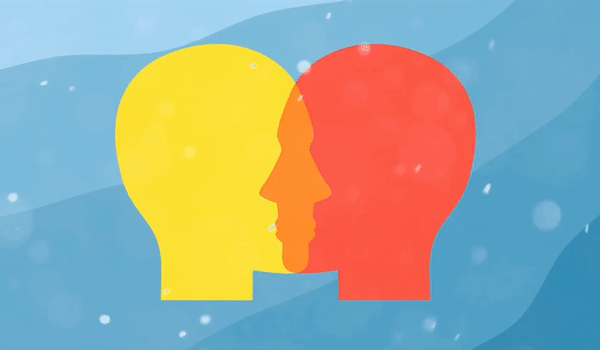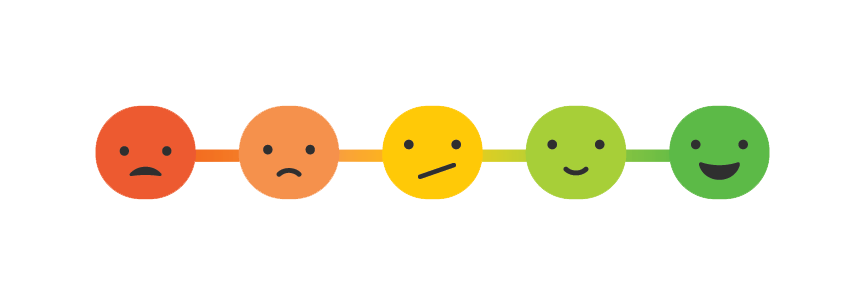
Jobs of the future: teaching empathy to artificial intelligence
empathy /ˈɛmpəθi/ noun The ability to understand and share the feelings of another.
In a world of taps, swipes, likes and shares, the ability to empathise with others remains a vital part of our daily lives. From comforting a friend, to sharing the pain of an unwell child, empathy is a vital skill that we develop through childhood.
Now, thanks to advancements in technology, we’re at a stage where we can think about the importance of empathy in machines. Artificial intelligence (AI) is becoming an ever-increasing presence in our daily lives, whether it’s the voice assistant on your phone, or the complex algorithms used to fight diseases.
The way we design interactions with AI systems and the results they provide should be thoughtfully considered, and in the future, the responsibility for designing artificial empathy could fall under the remit of an empathologist – a job that has yet to exist.
We spent some time discussing the impact and importance of empathy in AI systems and the possible roles that an empathologist might one day play, with Michael Banissy, Professor and Head of Department in Psychology at Goldsmiths, University of London, and Chris Edgar, Postdoctoral Research Fellow at Banissy Lab.
Their research investigates how people perceive, interpret and interact with others, offering a unique, academic perspective which goes beyond the pure technology field. We hope you find the below discussion insightful, and we’d love to hear your thoughts on @MSEurope. ![]()
![]()
![]()

The need for empathy
Empathy is a fundamental part of our lives. It contributes to collaboration and cooperation, and transcends cultures, social behaviours and wellbeing. According to Banissy, “Humans are social beings. If you really want to think about developing technology like AI, I think it’s crucial that empathy is involved to some degree.”
An AI system with the capacity for empathy could provide more natural interactions, while making judgements that take our mood or feelings into account. “Depending on the type of information you want technology to convey, how you want individuals to react to it, or how you predict they’re going to react to it, you’re going to need to understand their current state,” says Edgar. “In a way, their emotional state is going to give you some clue as to how they’re likely to respond.”
It’s not as simple as recognising someone’s tone of voice, posture, or facial expression – there’s a lot more to it than that.
Voice assistants are one such example. The way they deliver information could be modulated to appropriately respond to an individual’s current emotional state, resulting in a more natural experience. This, however, is no easy task. While it’s possible for machine learning to differentiate between smiles and frowns for example, the reality is that we can cry with happiness, or smile in frustration, depending on our mood and individual personalities.
“Currently, machine learning algorithms are quite good at recognising some physiological or behavioural cues that are associated with specific emotional states,” Edgar explains. “However, if you look up the most sophisticated theories of emotion, and how they’re produced – there’s a variety of them, and there’s no correct one – they’re all much more complicated. It’s not as simple as recognising someone’s tone of voice, posture, or facial expression – there’s a lot more to it than that.”
As someone with an academic background in empathy, an empathologist could therefore use their expertise to build upon AI systems’ understanding of different emotional nuances, while working on improving algorithms to better understand the emotional cues of individual users. Ultimately, they could help systems go beyond only measuring the surface level of expressions.

The importance of diversity
Diversity is widely regarded as one of the most important foundations of any successful team, with different viewpoints and experiences coming together to generate better end results. Mirroring this, an AI system is only as good as the model it’s built upon – if it’s fed a narrow range of data, its functionality will be more limited.
This is why the role of an empathologist could prove to be a vital one. The different viewpoint and knowledge they provide will help ensure that systems are designed with more than just a pure technology angle in mind.
Banissy states that “If you think about it more broadly, I think it’s really about someone who can bring in the insights from a complicated range of sources, to help to aid AI development teams in the most efficient way. There are all these different models, all these different perspectives, and it’s very easy to get quickly confused. Bringing someone in with expertise, who can help you understand the different components of what’s most crucial, would be useful. It’s so enjoyable working with people from different perspectives, because they make you think about problems differently. That’s the key part of a highly collaborative and innovative team.”
Designing a system with a more diverse team and feeding it a diverse range of data will result in algorithms that will be able to more accurately predict or recognise emotions as they exist in the real world, while at the same time providing more meaningful functionality as a result.
It’s so enjoyable working with people from different perspectives, because they make you think about problems differently
 Social impact
Social impact
At a base level, there’s value from the pure scientific and technological challenge of building an AI system that’s able to empathise with others in a believable way. Beyond systems which provide information, carry out administrative tasks or make data-based predictions however, an empathologist could also help create systems designed to have a positive impact on our emotions themselves.
In Banissy’s words, “As a social cognition and empathy researcher, one of the big things in my field is that social health is a crucial feature in life. We know, for instance, that loneliness can have very negative effects on health and wellbeing, so developing a system that could provide some way to facilitate or provide social health benefits would be incredibly beneficial.”
While the role of an empathologist has yet to be concretely defined, visualising the potential of the role and the impact it could have on future AI systems allows us to think about new applications and fresh possibilities for the role that AI could play in our lives. Person or machine, it’s a future worth looking forward to.















